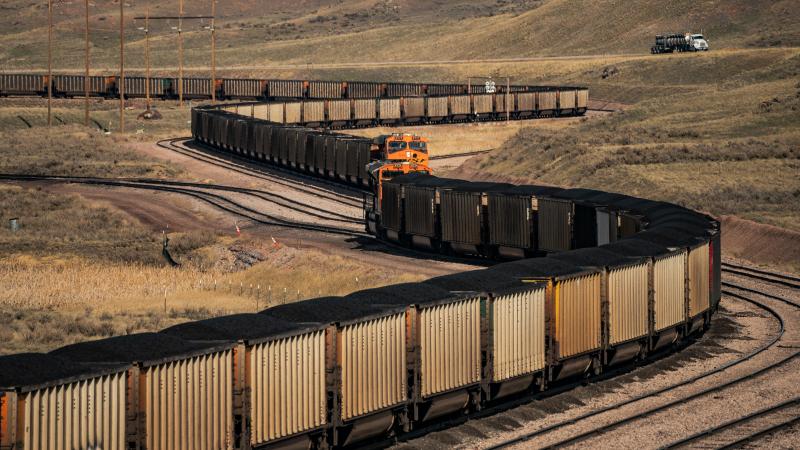Increasing copper production for green energy is not just difficult — it’s impossible, study says
In order to meet the demands of the green energy transition, according to the University of Michigan study as many as six new mines must be built annually over the next several decades. From exploration to construction, it can take 50 years or more to open one.
Proponents of the transition to so-called green energy argue that the technology to eliminate the use of fossil fuels already exists and it’s just a matter of scaling it up to meet demand. That sounds simple enough.
Putting aside the impact to energy costs and other challenges of this proposed transition, analyses of what is technically and financially possible in developing the resources needed for this plan show that the energy transition in the timescales that proponents demand is not just difficult. It’s impossible.
A new study by the University of Michigan concludes that it is “not possible” to mine enough copper to keep up with current U.S. climate policy aiming to transition the electricity grid and transportation sector to run on renewable energy.
The study looked at 120 years of data from global copper mining companies and compared that to the amount of copper that would be needed for the U.S. to transition to electric vehicles and run the electricity grid on wind and solar.
Between 2018 and 2050, the researchers found, the world will need 115% more copper than has been mined in all of human history up to 2018 just to meet current demand. That’s without politicians' push to a green energy transition. In order to meet the demands of the green energy transition, according to the study, as many as six new large copper mines must be brought online annually over the next several decades.
About 40% of that copper production, the researchers estimate, will be needed just for upgrades to the grid to support electric vehicles.
"I'm fully on board with the energy transition. However, it needs to be done in a way that's achievable,” Adam Simon, U-M professor of earth and environmental studies, said in a statement.
It isn't possible
According to David Hammond, a mineral economist with decades of experience as a mining consultant, bringing a single large copper mine online every year isn’t possible. There are currently 20 copper mines operating around the world, and two of those exist in the United States. Altogether, they produce 8 million to 9 million tons of copper annually.
The estimated future demand for copper, according to S&P Global, expects that the globe will need approximately 50 million metric tons of copper annually by 2050.
Hammond told Just the News that mineral economists like him used to make forecasts on all kinds of different metals, but that practice is disappearing.
“We’re scared to. We don’t want to make forecasts because we have no clue. There are so many geopolitical, political, and industrial factors at work that it is now very, very difficult to see what our needs on a specific metal are going forward,” Hammond explained.
As an example of how quickly things can change, he pointed to electric vehicle sales. While electric vehicles were predicted to take over America’s roads just a couple years ago, more than 5,000 dealerships have campaigned against the mandates as their lots filled up with EVs they couldn’t sell. Automakers have lost billions of dollars on their EV lines and scaled back EV transition plans to match the slower pace of consumer interest. Fewer EVs sold and produced means less copper demand.
Should the energy transition proceed as proponents want, however, the demand for copper will grow exponentially. Recycling won’t get us there, Hammond said. The current global copper recycling rate is somewhere between 15% and 20%, which isn’t a large enough source to meet future demand of the energy transition. There are fundamental issues with metal separation, Hammond explained, which will prevent it from matching production as a supply source.
Insurmountable challenge
In the U.S., the permitting process of building a new mine runs up against extensive opposition and the glacial pace of bureaucracy. For example, the Resolution Copper Mine in Arizona would increase U.S. production from about 1 million metric tons annually to roughly 1.5 million metric tons annually. That would supply 25% of the current copper demand in the U.S. The Resolution mine has been in development for 30 years.
But Hammond said that even before a mine gets to the permitting process, the exploration process can take 20 to 50 years. Most of the copper deposits that big producers in the world are tapping today were found back in the 1960s.
“The 1950s and 1960s were the heyday of finding big copper deposits,” Hammond said.
That was the era of the porphyry deposits, he said. These are deposits found on the surface, and they take a lot of work to develop, but a lot of copper can be had from them. Exploration can find veins of copper, Hammond explained, and these can be high grade, but these finds don’t add significantly to global production.
There are some other large deposits, such as one in Mongolia that's entering production, but that will go to China who possesses 50% of the world’s refining capacity for copper.
Even when you find a deposit that’s economically feasible to develop, and you wind through decades of permitting, it can then take three to five years before construction is done and production begins.
“That rate is not going to meet anywhere near demand, with or without the Chinese, no matter how you slice it,” Hammond said.
More dirt
The other approach to expanding production is to expand the existing mines. Hammond explains this has problems, too. As you expand a mine, the grade of copper goes down.
“So the pits have to be made larger and larger and larger. As the grade is going down, well, the cost to produce a pound of copper when you have to dig more dirt, it costs more per pound,” he said.
This means that the cost of everything from EVs to transmission lines goes up, which would present a financial barrier to the transition.
Copper is but one mineral needed to make this transition happen, and the exploitation of these minerals all present similar challenges, difficulties and insurmountable barriers.
The University of Michigan researchers are hoping that policymakers take a look at their study. This research, they said in their statement, might make lawmakers reconsider their green-energy deadlines and scale back their demands to something that is actually possible.
The Facts Inside Our Reporter's Notebook
Links
- scaling it up to meet demand
- Putting aside the impact to energy costs
- other challenges
- timescales that proponents demand
- new study by the University of Michigan
- said in a statement
- according to S&P Global
- ore than 5,000 dealerships have campaigned
- utomakers have lost billions of dollars
- scaled back EV transition plans
- consumer interest
- extensive opposition and the glacial pace of bureaucracy
- porphyry deposits
- difficulties and insurmountable barriers
















